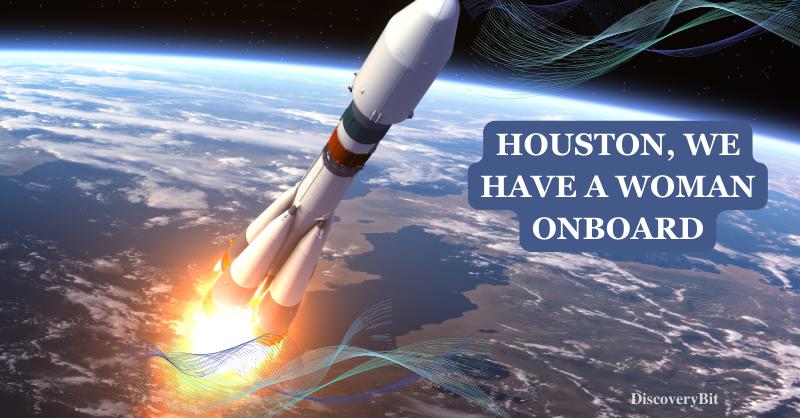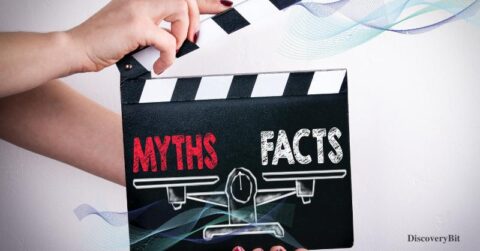In many fields, women have faced underestimation and a lack of representation, especially in areas thought to require exceptional mental prowess. One such realm is the National Aeronautics and Space Administration (NASA). Despite constituting over half of the global population, women have often been sidelined in sectors demanding intense cognitive abilities.
But contrary to misconceptions, women have been integral to NASA’s journey since its inception. They’ve contributed significantly to space programs, reshaping NASA’s technology and achievements. Let’s explore the incredible women who have defied norms and propelled space exploration forward.
1) Shannon Lucid
 She was one of the first women admitted into astronaut program and later became a NASA astronaut in 1979. Not only did Lucid set the American record for the longest duration in space during her missions aboard the Mir space station, but she also conducted groundbreaking experiments in various scientific fields, including biology and physics, contributing significantly to our understanding of long-duration spaceflight’s effects on the human body.
She was one of the first women admitted into astronaut program and later became a NASA astronaut in 1979. Not only did Lucid set the American record for the longest duration in space during her missions aboard the Mir space station, but she also conducted groundbreaking experiments in various scientific fields, including biology and physics, contributing significantly to our understanding of long-duration spaceflight’s effects on the human body.
2) Valentina Tereshkova and Sally Ride

Valentina Tereshkova

Sally Ride
Valentina Tereshkova and Sally Ride made history as the first women in space. Tereshkova, in 1963 for Russia, and Ride, in 1983 for the United States, paving the way for others. As the first woman in space, Tereshkova orbited the Earth 48 times during her historic Vostok 6 mission. Apart from being an astronaut, she was a prominent advocate for space exploration and served in various political roles post-retirement.
Sally Ride’s groundbreaking journey fueled aspirations for women in STEM. Ride’s pioneering spaceflights, starting from STS-7, inspired future generations. Beyond her stellar missions, she championed education, co-founding Sally Ride Science to engage young minds in science and technology. As a NASA physicist, Ride’s legacy echoes, encouraging more women scientists to reach for the stars. Her trailblazing achievements continue to galvanize space exploration efforts and remain a testament to NASA’s commitment to diversity and innovation.
3) Ellen Ochoa
 Ellen Ochoa, the first Hispanic female astronaut in 1993, not only participated in multiple space missions but also made significant contributions as an engineer. Ochoa’s impressive career didn’t end with her space missions. She became the first Hispanic director of NASA’s Johnson Space Center, overseeing astronaut training and mission control. Her tenure led to technological advancements and strategic planning for future space missions.
Ellen Ochoa, the first Hispanic female astronaut in 1993, not only participated in multiple space missions but also made significant contributions as an engineer. Ochoa’s impressive career didn’t end with her space missions. She became the first Hispanic director of NASA’s Johnson Space Center, overseeing astronaut training and mission control. Her tenure led to technological advancements and strategic planning for future space missions.
4) Dr. Michelle Lynn Thaller
 Dr. Michelle Lynn Thaller actively communicates NASA’s scientific endeavors, emphasizing the role of women astronauts, fostering public awareness. Thaller’s role in communicating complex scientific concepts to the public fosters greater interest and understanding of NASA’s missions. She continues to inspire young scientists and science enthusiasts through her engaging outreach efforts.
Dr. Michelle Lynn Thaller actively communicates NASA’s scientific endeavors, emphasizing the role of women astronauts, fostering public awareness. Thaller’s role in communicating complex scientific concepts to the public fosters greater interest and understanding of NASA’s missions. She continues to inspire young scientists and science enthusiasts through her engaging outreach efforts.
5) Dr. Kalpana Chawla
 Dr. Kalpana Chawla, the first Indian-born woman in space, brought her aerospace engineering prowess to NASA, leaving a remarkable legacy. Chawla’s legacy extends beyond her remarkable space achievements. She exemplified dedication, having logged over 700 hours in space, and tragically lost her life in the Space Shuttle Columbia disaster. Her enduring impact inspired countless individuals, and several scholarships and awards bear her name.
Dr. Kalpana Chawla, the first Indian-born woman in space, brought her aerospace engineering prowess to NASA, leaving a remarkable legacy. Chawla’s legacy extends beyond her remarkable space achievements. She exemplified dedication, having logged over 700 hours in space, and tragically lost her life in the Space Shuttle Columbia disaster. Her enduring impact inspired countless individuals, and several scholarships and awards bear her name.
6) Dr. Molly Brown

Dr. Molly Brown pioneers remote sensing, furnishing crucial U.S. Government data vital for environmental insights and food security. Her expertise unveils Earth’s dynamics profoundly.
Within remote sensing, Dr. Brown’s work informs policies, fortifying our understanding of environmental shifts and ensuring food stability. Her contributions align with NASA’s pursuit of knowledge, embodying innovation and exploration.
Dr. Brown’s impact extends far beyond data provision, empowering governments and sparking aspirations for a sustainable future. Her pioneering efforts not only secure food resources but also elevate our understanding of Earth’s complexities, laying the groundwork for a resilient tomorrow, both on our planet and in the cosmos.
7) Dr. Mae Jemison
 Dr. Mae Jemison, inspired by trailblazers like Sally Ride and Nichelle Nichols, joined NASA in 1987 and on September 12, 1992, became the first African American woman in space, marking a pivotal moment in history. Beyond her groundbreaking space journey, Jemison’s contributions include her efforts in promoting STEM education. She founded educational programs encouraging young people, especially girls and minorities, to pursue careers in science and technology.
Dr. Mae Jemison, inspired by trailblazers like Sally Ride and Nichelle Nichols, joined NASA in 1987 and on September 12, 1992, became the first African American woman in space, marking a pivotal moment in history. Beyond her groundbreaking space journey, Jemison’s contributions include her efforts in promoting STEM education. She founded educational programs encouraging young people, especially girls and minorities, to pursue careers in science and technology.
8) Kristin Rozier

Kristin Rozier, a pioneering scientist, shapes the future of air traffic control systems, championing safety and innovation. Her mentorship extends beyond, inspiring aspiring scientists. Within Next Generation Air Traffic Control Systems, Rozier’s brilliance navigates us toward smoother skies, revolutionizing aviation.
Her orbit intersects with NASA’s aspirations for space exploration, reflecting the spirit of discovery. Rozier embodies the essence of pioneers, pushing boundaries and igniting passion for exploration. Her trajectory parallels humanity’s quest for discovery, impacting not only air navigation but also fueling aspirations for cosmic exploration. Kristin Rozier epitomizes the impact scientists wield, elevating our skies and propelling aspirations for exploration beyond the stars.
9) Eileen Collins
 Eileen Collins, the first female space shuttle pilot and commander, brought her experience as a former U.S. Air Force colonel and test pilot to NASA, piloting Discovery shuttle in 1995. As the first female space shuttle commander, Collins piloted and commanded multiple shuttle missions. Her leadership skills and expertise in aerospace engineering contributed significantly to NASA’s accomplishments in space exploration.
Eileen Collins, the first female space shuttle pilot and commander, brought her experience as a former U.S. Air Force colonel and test pilot to NASA, piloting Discovery shuttle in 1995. As the first female space shuttle commander, Collins piloted and commanded multiple shuttle missions. Her leadership skills and expertise in aerospace engineering contributed significantly to NASA’s accomplishments in space exploration.
10) Katherine Johnson, Dorothy Vaughan, and Mary Jackson

Katherine Johnson

Dorothy Vaughan

Mary Jackson
The trio, highlighted in “Hidden Figures movie,” not only calculated crucial trajectories for missions–including the flight trajectory for astronaut Alan Shepard, but also challenged racial and gender barriers prevalent during their time. Their dedication and resilience paved the way for future generations of women in STEM.
Katherine Johnson, awarded the Presidential Medal of Freedom, had a NASA building named after her, symbolizing the recognition of her exceptional contributions.
Despite these achievements, gender barriers persist. The much-anticipated all-female spacewalk, scheduled in 2019, faced a setback due to equipment availability, yet it marked a significant step towards gender inclusivity in space missions.
However, the future holds promise. NASA former Administrator Mr. Jim Bridenstine envisions a female astronaut landing on the Moon, even hinting that the first person to step on Mars could be a woman. This progressive stance from NASA’s leadership signifies a hopeful shift in embracing women’s capabilities in space exploration.
While setbacks occur, the determination of women in space missions remains unwavering. The stage is set for women to continue their trailblazing journey beyond the skies, inspiring generations to come.
Image Reference
Tags: black nasa ladies Female hidden figure women Hidden Figures hidden figures ladies katherine johnson NASA nasa katherine johnson Science Space technology Women













